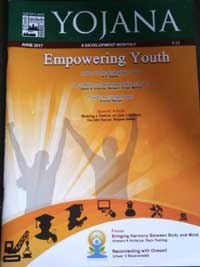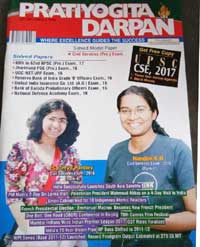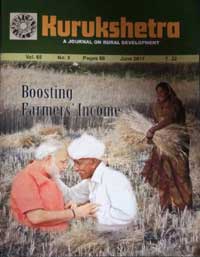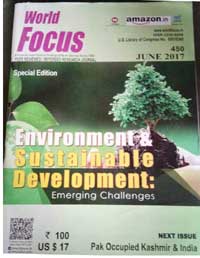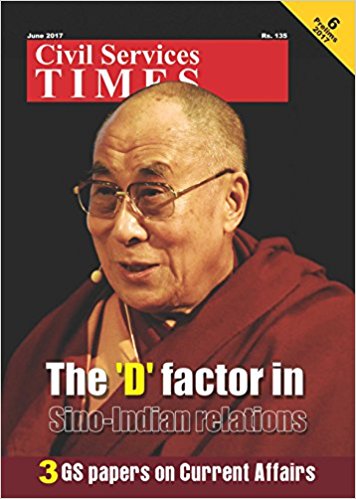
(GIST OF YOJANA) Demonestisation-Impacting Elections - May - 2017
For far too long, Indian politics has seen extensive use of money power to
influence the voters and win elections. Traditional wisdom with regard to polls
in India has it that distribution of money and liquor on the night before
polling decides the representatives of the people. There is a strong evidence
that over the years free and fair elections have been sacked in bags of currency
notes being peddled to the nation by our political parties.
An analysis by Association of Democratic Reforms (ADR) shows that among the
affidavits declared by candidates in the 2011 assembly elections in Tamil Nadu,
West Bengal, Kerala, Puducherry and Assam, 576 candidates (16 per cent of the
3,547 analyzed), were crorepatis (multi- millionaires) and yet 50 per cent of
the candidates had never filed income tax returns. The situation cannot be
different in other states.
Not that political leaders are happy with rampant use of money in elections:
They have expressed concerns about it. However, in the absence of a serious
discussion to find a solution, it seems their concern is mere lip service. The
problem has been discussed in parliamentary debates, committees have been
constituted and the only refrain we hear is that there should be state funding
of elections as a solution to the problem.
The most famous committee on this subject was the Indrajit Gupta ,Committee
set up in 1999 which consisted of many political stalwarts like Dr Manmohan
Singh, Mr Sornnath Chatterjee and the like. The committee suggested only partial
state funding of elections and that too with a condition that there must be
genuine inner party democracy which no party is willing to consider.
It is a fact that democracy cannot function without money to contest
elections. However, money cannot be allowed to dominate the process so much that
only the rich can contest and hijack the political system.
The law, therefore, prescribes a ceiling on expenditure of the candidates -
though strangely not on the expenditure of the political parties. The absence of
a ceiling on political parties' expenditure negates the whole logic of a ceiling
and creates conditions of financial indiscipline. To outdo their rivals, all
parties spend thousands of crores of rupees. In the 2014 general elections, the
amount spent on campaigns was estimated at a staggering Rs 30,000 crore.
Where does this money come from? The sources could be: corporate funds, small
donations, sale of coupons and membership fee, besides interest on deposits,
rental and revenue income. There is no transparency in the source of most
donations. As much as 75-80 percent of all funds are shown as cash donations
without disclosing the source. This is a serious matter. It may be foreign money
or from crime, drug or real estate mafia.
It has often been suggested that the: presence of black money in large
quantities, especially in the real estate sector, prevented India from suffering
many of the ill effects of the global financial crisis of 2008, but the
pernicious effect of money power in elections in India has no such upside. The
demonetisation of high denomination notes of Rs. 500 and Rs. 1,000 announced by
the Prime Minister came at the right time, just ahead of five state elections.
Parties and candidates who were ready with the sackful of notes for public
bonanza were fixed not knowing what to do with that money.
In the last set of Assembly polls concluded in May 2016, we saw an
unprecedented step when the ECI was forced to cancel elections to two Tamil Nadu
assembly seats, Aravakurichi and Thanjavur, for the uncontrolled use of money.
The poll panel then wrote to the government seeking permanent legal powers to
countermand polls on credible evidence of the use of black money.
Although the Law Ministry has rejected this proposal, I am hopeful the Prime
Minister will consider it in pursuance of his war .against black money.
The BJP's economic affairs cell chief, Gopal Krishna Agarwal, said the
demonetization drive would address, at least for the duration of this set of
polls, the problem of electoral financing from the supply side. "Till now, there
was pressure on political parties to give an account of their spending in polls,
but on circulation of this money, regulation was not effective. This will hit
the supply side and will bring down the volume of spending quite significantly,"
he said.
These claims will be proved right only if the follow up action on the long
pending electoral reforms proposals is taken without further delay.
Demonetisation and the subsequent developments, even if not originally
intended, have a bearing on electoral reforms. After demonetisation threw up
huge logistical challenges, the government's campaigns to promote e-banking,
e-wallet etc have come on everybody's lips. This, again, is a positive
development to end black economy. When even a rickshaw puller or vegetable
seller is told to stop cash transactions, this will lead to establishment of a
stronger banking system and higher level of financial inclusion.
However, this has led to an inevitable demand that exemption of cash
donations to political parties below Rs 20,000 must also be dispensed with
straight away. This will take care of the non-transparency of 80 per cent of
political funding which all political parties have shown as cash donations. This
amounts to an average Rs 1,000 crore per year.
Another development is the Prime Minister's directive to his party
legislators to disclose all their bank transactions since November 8. Many
questions were raised. My reaction is that instead of criticising it and
suggesting what the PM could have done better, why not welcome it as a first
positive step towards the financial transparency of politicians? Another great
move of the government is to pass an Act to curb benami property deals and the
subsequent crackdown. This should also have a salutary effect on the black money
in elections as this is the biggest source of illicit election funding.
The unprecedented step of demonetization may hopefully turn out to be a
blessing in disguise for conducting free and fair elections, where cashless
transactions will ensure higher level of transparency and scrutiny. I hope the
time for long-pending electoral reforms has finally come.
Courtesy : Yojana




